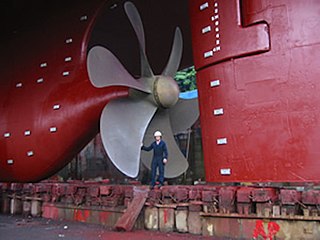
A propeller is a device with a rotating hub and radiating blades that are set at a pitch to form a helical spiral which, when rotated, exerts linear thrust upon a working fluid such as water or air. Propellers are used to pump fluid through a pipe or duct, or to create thrust to propel a boat through water or an aircraft through air. The blades are shaped so that their rotational motion through the fluid causes a pressure difference between the two surfaces of the blade by Bernoulli's principle which exerts force on the fluid. Most marine propellers are screw propellers with helical blades rotating on a propeller shaft with an approximately horizontal axis.

A model aircraft is a physical model of an existing or imagined aircraft, and is built typically for display, research, or amusement. Model aircraft are divided into two basic groups: flying and non-flying. Non-flying models are also termed static, display, or shelf models.

Free flight is the segment of model aviation involving aircraft with no active external control after launch. Free Flight is the original form of hobby aeromodeling, with the competitive objective being to build and launch a self controlling aircraft that will consistently achieve the longest flight duration over multiple competition rounds, within various class parameters.
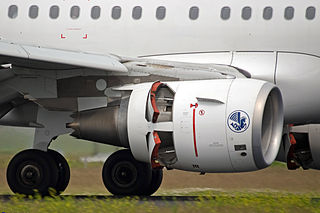
Thrust reversal, also called reverse thrust, is the temporary diversion of an aircraft engine's thrust for it to act against the forward travel of the aircraft, providing deceleration. Thrust reverser systems are featured on many jet aircraft to help slow down just after touch-down, reducing wear on the brakes and enabling shorter landing distances. Such devices affect the aircraft significantly and are considered important for safe operations by airlines. There have been accidents involving thrust reversal systems, including fatal ones.
A motor glider is a fixed-wing aircraft that can be flown with or without engine power. The FAI Gliding Commission Sporting Code definition is: a fixed-wing aerodyne equipped with a means of propulsion (MoP), capable of sustained soaring flight without thrust from the means of propulsion.

In marine propulsion, a variable-pitch propeller is a type of propeller with blades that can be rotated around their long axis to change the blade pitch. Reversible propellers—those where the pitch can be set to negative values—can also create reverse thrust for braking or going backwards without the need to change the direction of shaft revolution.

Variable-geometry turbochargers (VGTs), occasionally known as variable-nozzle turbochargers (VNTs), are a type of turbochargers, usually designed to allow the effective aspect ratio of the turbocharger to be altered as conditions change. This is done with the use of adjustable vanes located inside the turbine housing between the inlet and turbine, these vanes affect flow of gases towards the turbine. The benefit of the VGT is that the optimum aspect ratio at low engine speeds is very different from that at high engine speeds.
Blade pitch or simply pitch refers to the angle of a blade in a fluid. The term has applications in aeronautics, shipping, and other fields.

In aeronautics, a variable-pitch propeller is a type of propeller (airscrew) with blades that can be rotated around their long axis to change the blade pitch. A controllable-pitch propeller is one where the pitch is controlled manually by the pilot. Alternatively, a constant-speed propeller is one where the pilot sets the desired engine speed (RPM), and the blade pitch is controlled automatically without the pilot's intervention so that the rotational speed remains constant. The device which controls the propeller pitch and thus speed is called a propeller governor or constant speed unit.

Astern propulsion is a maneuver in which a ship's propelling mechanism is used to develop thrust in a retrograde direction. Astern propulsion does not necessarily imply the ship is moving astern ; astern propulsion is used to slow a ship by applying a force in the direction of the bow of the ship, instead of the stern. The equivalent concept for an airplane is thrust reversal.

The Grob G109 is a light aircraft developed by Grob Aircraft AG of Mindelheim Mattsies in Germany. It first flew in 1980. The G109B followed in 1984. It is a two-seat self-launching motor glider in which the pilot and passenger or student sit side by side, with good visibility provided by large windows.
Overspeed is a condition in which an engine is allowed or forced to turn beyond its design limit. The consequences of running an engine too fast vary by engine type and model and depend upon several factors, the most important of which are the duration of the overspeed and the speed attained. With some engines, a momentary overspeed can result in greatly reduced engine life or catastrophic failure. The speed of an engine is typically measured in revolutions per minute (rpm).

In aeronautics, an aircraft propeller, also called an airscrew, converts rotary motion from an engine or other power source into a swirling slipstream which pushes the propeller forwards or backwards. It comprises a rotating power-driven hub, to which are attached several radial airfoil-section blades such that the whole assembly rotates about a longitudinal axis. The blade pitch may be fixed, manually variable to a few set positions, or of the automatically variable "constant-speed" type.
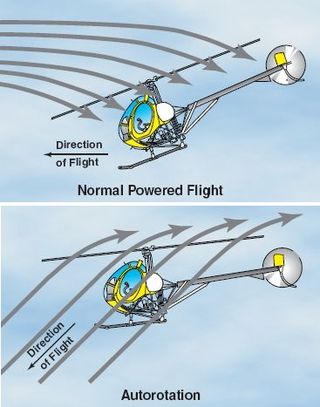
Autorotation is a state of flight in which the main rotor system of a helicopter or other rotary-wing aircraft turns by the action of air moving up through the rotor, as with an autogyro, rather than engine power driving the rotor. The term autorotation dates to a period of early helicopter development between 1915 and 1920, and refers to the rotors turning without the engine. It is analogous to the gliding flight of a fixed-wing aircraft. Some trees have seeds that have evolved wing-like structures that enable the seed to spin to the ground in autorotation, which helps the seeds to disseminate over a wider area.

The Stemme S10 is a self-launching sailplane produced by Stemme AG in Strausberg (Germany) since the 1980s. The engine is mounted amidships and it features an unusual folding propeller which is stowed inside the aircraft's nose-cone when the engine is not in use.

Hoffman Propeller is a German manufacturer of aircraft propellers. The company headquarters is located at Rosenheim in Bavaria, Germany. The company makes design, manufacture and maintain propellers with blades in wooden composite construction for needed purposes, mainly for the general aviation, hovercraft and any special applications such as blades for wind tunnels the automotive industries. By the version of Aircraft Turboprop Propeller System Market Outlook, the company was one of the major market players.

Many variations of aircraft engine starting have been used since the Wright brothers made their first powered flight in 1903. The methods used have been designed for weight saving, simplicity of operation and reliability. Early piston engines were started by hand. Geared hand starting, electrical and cartridge-operated systems for larger engines were developed between the First and Second World Wars.
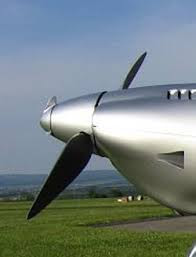
The V-Prop is an automatic self-powering electronic variable-pitch propeller developed by Silence Aircraft, the manufacturers of the Silence Twister single-seat elliptical-winged kitplane.
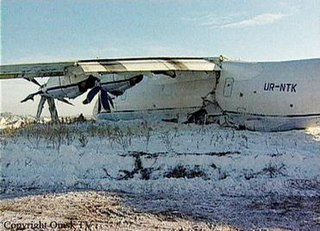
On 27 January 2001, an Antonov An-70 prototype crashed close to Omsk Tsentralny Airport, Russia during testing of the aircraft. All 33 passengers and crew on board the aircraft survived.
A variable pitch fan is similar in concept to that of a variable-pitch propeller and involves progressively reducing the pitch of the fan on a turbofan as the engine is throttled. Although variable pitch fans are used in some industrial applications, the focus of this article is on their use in turbofan engines. No production engine uses such a feature; however, it will likely be required on at least some of the next generation of high bypass ratio turbofans.


















